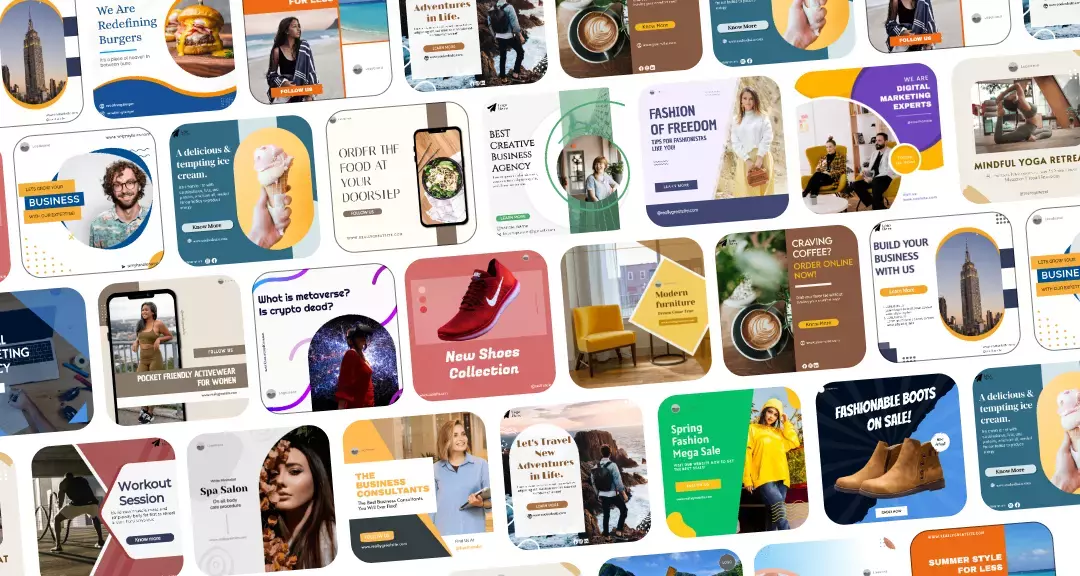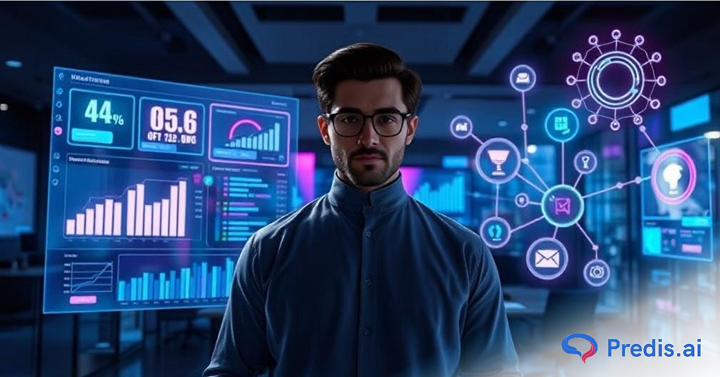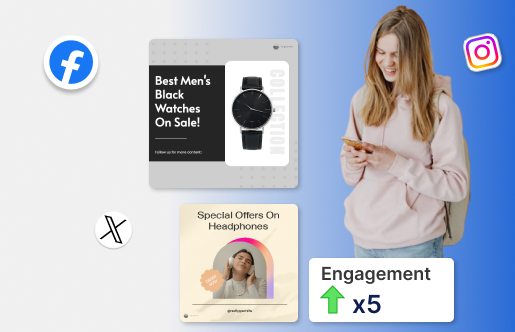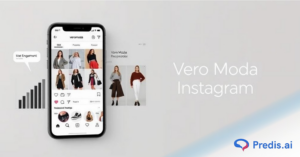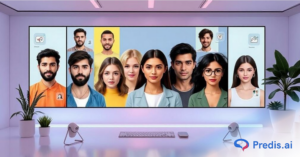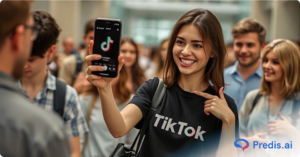Digital advertising has entered a new era – one driven by intelligence, automation, and precision. Over the past few years, AI and ML have transformed digital advertising from a data-heavy guessing game into a smart, predictive, and personalized system that delivers real results. From optimizing bids in milliseconds to generating creative content instantly, these technologies are rewriting the rules of how brands connect with audiences. In this blog, we’ll explore exactly how AI and ML have transformed digital advertising, where they’re heading next, and what steps you can take to stay ahead.
The Shift from Manual to Machine – The Foundation of Transformation
In the early days of online marketing, advertising relied heavily on manual settings, intuition, and trial-and-error. Marketers spent countless hours analyzing spreadsheets, adjusting bids, and segmenting audiences based on limited data.
That all changed when AI and ML began to reshape digital advertising. Machine learning algorithms started learning from real-time performance data, adapting faster than any human could. These systems automatically identify trends, forecast campaign results, and deliver ads to users most likely to convert – all in real time.
This shift from manual work to intelligent automation is one of the clearest examples of how AI and ML have transformed digital advertising forever.
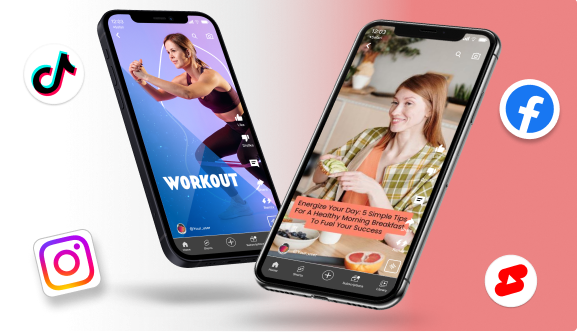
How AI and ML Have Transformed Digital Advertising – Core Innovations
1. Predictive Bidding and Smarter Budget Allocation
- When it comes to ad spend, efficiency is everything. AI and ML have transformed digital advertising by introducing predictive bidding systems that analyze huge amounts of campaign data. AI-powered predictive bidding analyzes massive campaign data to optimize spend. Brands often Hire AI Developer to create tailored bidding models.
- These algorithms forecast which placements, times, and audiences are most likely to drive conversions. As a result, bids adjust automatically – ensuring every dollar is optimized for maximum return.
- Advertisers no longer need to micromanage budgets manually. Machine learning models now do it smarter, faster, and more accurately than ever.
2. Hyper-Personalization Through Data Insights
- In the modern ad world, one-size-fits-all messaging doesn’t work. AI and ML have transformed digital advertising by enabling hyper-personalization that was once unimaginable.
- Machine learning tools analyze browsing behavior, interests, and real-time actions to deliver personalized creatives to each user. Dynamic Creative Optimization (DCO) ensures that every person sees the most relevant ad – whether it’s a different product, offer, or image.
This approach builds stronger emotional connections and improves click-through rates, engagement, and conversions.
3. AI-Powered Creative Generation
- Creating multiple ad variations manually is time-consuming. Enter generative AI. From copy to images and videos, AI can produce creative assets in seconds, enabling marketers to test more ideas faster.
- While AI-generated content speeds up production, it comes with a caveat: authenticity matters. Human oversight ensures the brand’s voice and messaging remain consistent, and that AI doesn’t produce content that could misrepresent the brand.
- For example, a leading beverage brand used AI-generated visuals to localize its campaign for different regions. This approach saved time and resources while maintaining relevance for each target audience.
4. Smarter Audience Targeting and Segmentation
- Traditional targeting relied heavily on demographics. Today, AI and ML in digital advertising can segment audiences based on intent, behavior, and predicted future actions.
- Machine learning models identify high-value users by analyzing complex datasets that humans could never process efficiently. Marketers can now target potential customers earlier in their decision journey, improving both acquisition and retention.
This approach also allows advertisers to uncover new audience segments, expanding reach without increasing spend.
5. Real-Time Analytics and Performance Optimization
- In the past, campaign performance was measured after the fact – often too late to make meaningful adjustments. AI changes that by providing real-time analytics and insights.
- Platforms can now automatically pause underperforming ads, reallocate budget to high-performing segments, and suggest new creative iterations. This continuous optimization ensures every dollar spent contributes to better results.
Real-time feedback loops mean campaigns are smarter, faster, and more efficient than ever.
Business Impact — Measurable Results You Can Track
The impact of AI and ML in digital advertising is measurable and tangible. Here are some of the most significant improvements marketers typically see:
- Click-Through Rate (CTR): AI optimization ensures ads reach the right users, boosting engagement.
- Cost Per Acquisition (CPA): Automated bidding and audience targeting reduce wasted spend.
- Return on Ad Spend (ROAS): Personalized creative and predictive optimization increase conversions.
- Conversion Rate: Hyper-personalization and dynamic content encourage users to take action.
Companies leveraging AI-driven advertising strategies often report up to 20–40% improvement in key performance metrics compared to traditional methods. Continuous model refinement ensures these gains grow over time.
How to Integrate AI and ML Into Your Advertising Strategy?
Implementing AI and ML in digital advertising requires a structured approach. To get expert support tailored to your campaigns, explore AI & ML Consulting Services for Marketing Optimization Here’s a practical roadmap:
- Audit Your Data: Assess the quality of first-party data and any available third-party sources. Clean, reliable data is essential for effective ML models.
- Identify High-Impact Use Cases: Start with areas that can deliver immediate ROI, such as predictive bidding or personalized creatives.
- Run a Pilot Campaign: Test AI tools with a small budget and monitor performance closely.
- Monitor and Refine Models: AI is not “set it and forget it.” Continuously analyze results, retrain models, and adjust strategies.
- Upskill Your Team: Ensure marketers and creative teams understand how to interpret AI insights and make informed decisions.
Starting small and scaling gradually reduces risk while maximizing the benefits of AI-driven campaigns.
Challenges and Ethical Considerations
Despite its advantages, AI and ML in digital advertising present challenges:
- Data Privacy: Collecting and processing personal data must comply with regulations like GDPR and CCPA.
- Bias and Fairness: ML models may unintentionally favor certain groups. Human oversight is crucial to prevent discrimination.
- Transparency: Consumers expect honesty in advertising. Clearly labeling AI-generated content maintains trust.
Addressing these challenges ensures campaigns are effective, ethical, and sustainable.
Real-World Success Stories
Several brands are already reaping the benefits of AI in advertising. For example:
Nutella — 7 Million Unique AI-Designed Labels
Nutella’s “Unica” campaign is a prime example of how AI and ML have transformed digital advertising and branding creativity. The company used an AI algorithm to generate over 7 million unique label designs for its jars, making each product one of a kind.
Result: The campaign sold out rapidly, boosted brand engagement, and demonstrated the power of AI-driven personalization at scale.
Cadbury (Mondelez) — “Shah Rukh Khan-My-Ad” Campaign
In India, Cadbury partnered with actor Shah Rukh Khan to launch a groundbreaking campaign using generative AI. The system created thousands of localized video ads featuring his face and voice customized for small businesses.
Result: Over 130,000 personalized ads went live, empowering local retailers and proving that AI and ML have transformed digital advertising into a tool for community-level engagement.
Coca-Cola — “Create Real Magic” AI Initiative
Coca-Cola’s “Create Real Magic” invited fans to use AI tools like DALL·E and GPT to design digital art with brand imagery. This innovative approach merged user creativity with AI to produce thousands of shareable assets.
Result: Massive social reach and brand affinity, showing that AI and ML have transformed digital advertising into a collaborative, crowd-powered experience.
BMW — AI-Generated Art on Luxury Cars
BMW blended art and technology by using generative AI to design visuals for its 8 Series Gran Coupé. The result was an artistic campaign that resonated with tech-savvy and design-conscious audiences.
Lesson: Beyond targeting and bidding, AI and ML have transformed digital advertising by redefining creative storytelling and customer engagement.
What’s Next? The Future of AI in Advertising
Looking ahead, AI will continue to evolve the advertising landscape:
- AI Video Generation: Personalized video ads created at scale for each viewer.
- Voice and Conversational AI: Targeting users through smart assistants and interactive experiences.
- On-Device AI: Real-time decision-making without relying solely on cloud-based systems.
- Deeper Retail Media Integration: AI driving more intelligent product recommendations and ad placements.
The message is clear: AI will enhance human creativity, not replace it. Early adoption with thoughtful implementation provides a competitive edge.
Boost Sales on Social Media with AI ⚡️
TRY NOWConclusion – Where Innovation Meets Imagination
AI and ML in digital advertising are no longer futuristic concepts — they are practical tools that drive better results today. By combining predictive analytics, personalization, creative generation, and real-time optimization, brands can deliver smarter campaigns with measurable impact.
Start small, test responsibly, and scale strategically. With the right approach, AI-powered advertising will not only improve ROI but also create meaningful connections with your audience.
Ready to revolutionize your campaigns? Begin integrating AI and ML into your advertising strategy today.
FAQs About AI and ML in Digital Advertising
AI and ML analyze user data and automate bidding, targeting, and creative decisions, leading to higher engagement and lower costs.
Yes. Many platforms offer scalable solutions, allowing small businesses to start with minimal budgets and grow as results improve.
High-quality first-party data is ideal, but even limited datasets can drive effective pilots when combined with AI tools.
With proper compliance, transparency, and consent management, AI-powered campaigns can protect user privacy while delivering effective targeting.
No. AI accelerates content production and testing, but humans are essential for strategy, creativity, and brand consistency.
